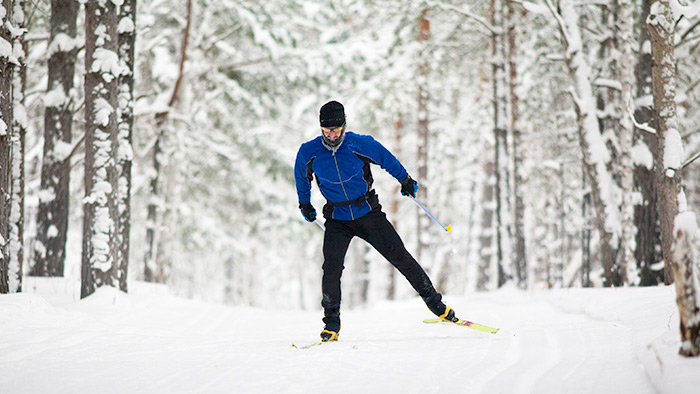Champions are made in the off-season, which is maybe the most underestimated part of the training cycle. But how to tackle the off-season, that period of time before base training and long before your “A” race can be a tricky road to navigate.
Some people end up taking too long to get back into training, whereas other never take any time off, and instead enter the base phase fatigued and often injured.
Here is a guide to helping you understand the entire triathlon off-season, from the moment you cross that final finish line of the year to how (and when) to successfuly transition into your pre-season training.
End of Season Phase
Most athletes will finish the season with a significant race, the IRONMAN World Championship in Hawaii in October or a late fall marathon such as the New York Marathon. Many will have chased a PB, trying to leverage on mileage and form accumulated over the summer.
Hopefully the last race is an “A” race, so you can ease into some real time off and enjoy life as a normal human being, immune to illness caused by overexertion. Should the race not be up to your expectations, well, then you need this break even more. This is because you likely over-exhausted yourself during the long months of training and racing. In any case, everyone, pros and age-groupers alike, need a quality break from their most favorite addiction, one that lasts three to four weeks in total.
The best recipe is two weeks of active recovery and two weeks of doing almost nothing.
This does not come easy to some athletes. We are, after all, creatures of habit. Many athletes get restless and all too worried that they will lose the form, put too much weight on, get lazy, and so on.
Losing some form is actually desirable in this phase—if you want to build a taller building, you need to strengthen the foundation! And to do so, you need to knock down a couple of levels.
By “doing nothing” you give all systems quality time to relax, restore and replenish. Your joints and tendons need a break, as well as your nervous system. The mental recovery is very important too; it is time to do and think about something other than “swim-bike-run.” It’s also a good time to stop controlling and monitoring your form, food, HR, TSS etc.
You have to step back to expand your response capacity to positive adaptation triggers so you can take a larger step next season. “Doing nothing” does not, of course, mean being totally sedentary. You just don’t do anything specific to your sport and you do not follow a training plan—for just four weeks! Go with the flow, exercise when you feel like it and try to move your body in different ways: Walk, rollerblade, skateboard, climb, play volleyball or just go to the sauna and spa.
Pre Season (Transition Season)
No matter what you call it (I think transition season is the best descriptor), this is the training phase after your time off following your last big race of the season. If your end-of-season phase was four weeks in length, plan on your transition season being between six and 10 weeks long.
Transition season is about preparing you for the specific training of the main season. It lays the overall fitness foundation and has the following objectives:
- Improve foundational strength and stability by general training
- Sustain and improve cardiovascular endurance
- Improve strength & conditioning of sport-specific moving muscles
- Develop technical skills (focus on swim and bike) and range of motion.
The strategies to achieve the above 4 objectives are the following:
1. Transition season is the functional strength season.
I am a big supporter of functional training throughout the season and recommend approaching it as 4th discipline, if you are a triathlete. Meaning, there is a periodized yearly plan for strength and condition training, with the transition period being the high-volume part of it.
We start with general conditioning training for all big muscles groups and work on general mobility. The number of repetition is high (15 to 20 reps per set) and the load is easy. We use predominantly drills with our own weight and over time add some additional weight to our exercises.
After three to four weeks of doing this general training, we make functional training a bit more sport-specific: we engage specific moving muscles, reduce the number of reps and increase the weight. The end result is progression in strength, increased mobility, motor control and balance. Two, hour-long strength sessions per week are ideal.
2. Transition season is swim season.
The foundation for a good triathlon performance is the swim. We pay for a weakness in the first discipline by low energy on the run. So swim, swim, swim—this will build your endurance, power and fatigue resistance—all in a low impact, injury-free way.
Start with “baby-swims,” mini-sprints of 10 to 15 meters, many reps, build it out to longer sprints, more “cruising” intervals, swimming with paddles, buoys, etc. If you have any deficits in your swimming technique and form, address them now, work with a coach or go to a swim camp.
Transition time is swim time, and the cold and darkness outside are quite conducive to warm, well-lit swimming pools indoors. Swim at least three times per week if you can. If you can, swim more. Only good things come from swimming for endurance athletes.
3. Transition season is time to play around with other sports.
To prevent mental fatigue and also to add some fun to our training, we use alternative sports to work on our endurance, motor skills, balance and strength. MTB is great for max power and bike-handling skills, indoor climbing will make your core, arms and shoulders stronger, which is perfect for the swim.
Rollerblades and skateboards are great for balance, quads and core. And if you are lucky enough to live close to snow and mountains, then cross-country (Nordic) skiing is the best alternative sport ever. It is endurance, functional training, VO2max, balance and coordination training—all in one!
Did your know that VO2max records for both genders are held by Nordic skiers? One longer session of an alternative sport, like two hours of mountain biking or cross-country skiing per week would be ideal.
4. Transition season is time to save your running legs.
Running is rough on the body. This is because on average every runner has one running injury per year, from a minor tear to a serious overload injury. So we should try to save our running legs for all the miles of training waiting for them in spring and summer time.
Instead, try to load running muscles by plyometric drills developing hip strength. It is in the hips where your true running engine is located and you need to learn how to engage it better to create a more propulsive running motion.
Try “dry running” in the gym, using light weights and cords to simulate running movement. And since you will be in the pool a lot, it is also a good idea to add 20 minutes of aqua jogging to your session. So, very little running, only short runs and progression via number of runs per week and a slight progression in their duration, with pretty much zero progression in intensity. Intensity is hidden in plyometric and functional training. You will it feel the benefits later, I guarantee it.
Enjoy your well deserved vacations from a structured training for a month, and then get back on the horse with smart, versatile and progressive transition training to set a foundation for a successful 2018 racing season!
You can purchase my full transition season plan here, including a free, one-week sample plan. Good luck and have fun!



